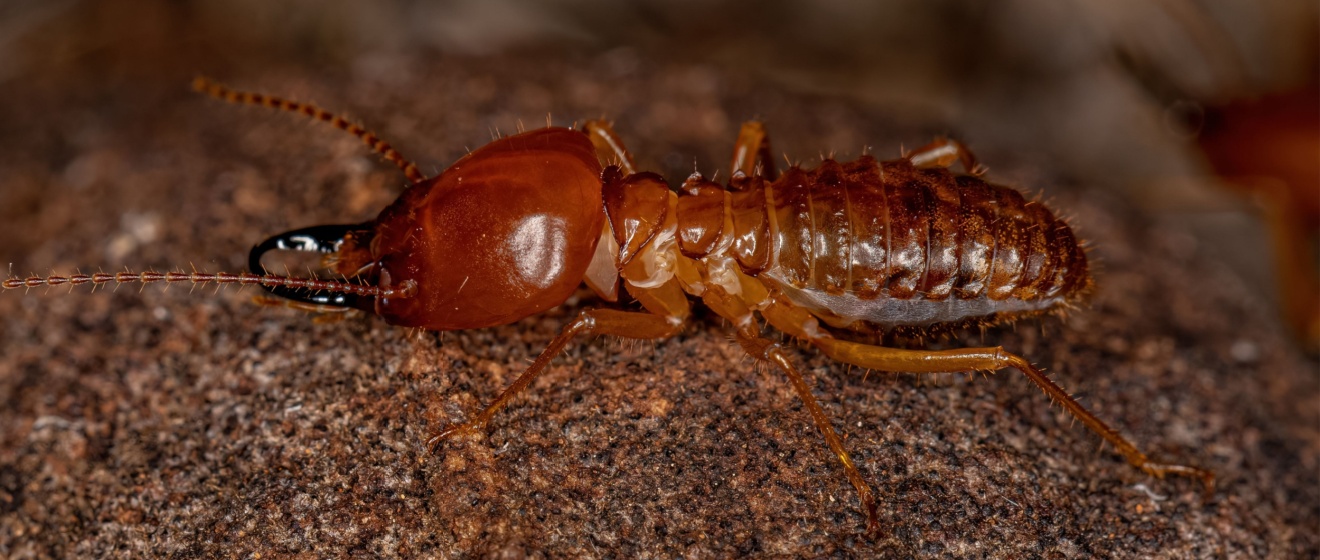Georgia’s warm, humid climate creates the perfect environment for termites to thrive. These destructive pests cause millions of dollars in property damage across the Atlanta metro area each year. As a homeowner, knowing which termite species you’re dealing with is crucial for effective treatment and prevention. In this guide, we’ll explore the primary termite types found in Georgia and provide identification tips to help you protect your home.
Subterranean Termites: Georgia’s Most Common Threat
Eastern Subterranean termites are by far the most prevalent and destructive termite species in Georgia. These termites build their colonies underground and can house up to 2 million members in a mature colony.
How to Identify Subterranean Termites:
- Workers: Cream-colored, soft-bodied insects about ¼ inch long
- Soldiers: Similar in size to workers but with large, rectangular brown heads and powerful mandibles
- Swarmers: About ⅜ inch long with straight antennae, thick waists, and two pairs of equal-length wings that extend well beyond their bodies
- Distinctive Signs: Mud tubes running along foundations, concrete, and plumbing that serve as protected highways between the soil and wood sources
Subterranean termites require constant contact with moisture and soil, which is why proper drainage and foundation maintenance are essential preventative measures for Atlanta metro area homes.
Formosan Termites: The “Super Termites”
While less common than Eastern Subterranean termites, Formosan termites have established themselves in parts of Georgia, particularly in coastal areas but increasingly moving inland toward the Atlanta region. Often called “super termites,” Formosan colonies can contain several million termites and cause damage much faster than other species.
How to Identify Formosan Termites:
- Workers: Similar to Eastern Subterranean termite workers but slightly yellowish
- Soldiers: Tear-drop shaped heads with straight mandibles extending from the head
- Swarmers: Light brown or yellowish in color, about ½ inch long
- Distinctive Signs: Carton nests (mixture of soil, wood, saliva, and excrement) built within walls, which allow them to maintain colonies above ground
Formosan termites swarm at night and are strongly attracted to light, making them more noticeable during their spring and summer swarm seasons.
Drywood Termites: The Furniture Destroyers
Unlike subterranean species, Drywood termites don’t require contact with soil and can infest dry wood with low moisture content. This makes them a threat to structural timbers, furniture, hardwood floors, and even wooden picture frames throughout Georgia homes.
How to Identify Drywood Termites:
- Workers: Creamy white to light yellow in color
- Soldiers: Large, brownish heads with black mandibles
- Swarmers: About ⅜ inch long with reddish-brown heads, gray-brown to light yellow bodies, and wings with distinct veins
- Distinctive Signs: Small kick-out holes in wood with six-sided fecal pellets (frass) that resemble coffee grounds or sawdust
Drywood termites typically swarm in late summer or early fall in Georgia, often after rain followed by hot, humid conditions.
Termite Swarming Seasons in Georgia
Understanding swarming seasons can help homeowners stay vigilant:
- Eastern Subterranean: Typically swarm from February to May, usually during daylight after rainfall
- Formosan: Usually swarm from April to July, primarily at night
- Drywood: Commonly swarm from late summer to fall
- Dampwood: Most likely to swarm during summer months
Why Professional Identification Matters
While this guide provides general identification tips, determining the exact species infesting your home often requires professional expertise. Different termite species require different treatment approaches, and misidentification can lead to ineffective control measures.
Kellco Pest’s trained technicians can accurately identify termite species specific to your Canton, Holly Springs, or greater Atlanta area home and develop a customized treatment plan to eliminate the current infestation and prevent future problems.
Don’t wait until termites have caused significant damage. If you suspect termites or want to establish preventative measures, contact Kellco Pest for a comprehensive termite inspection and protection plan tailored to your home’s specific needs and the termite species prevalent in your neighborhood.
